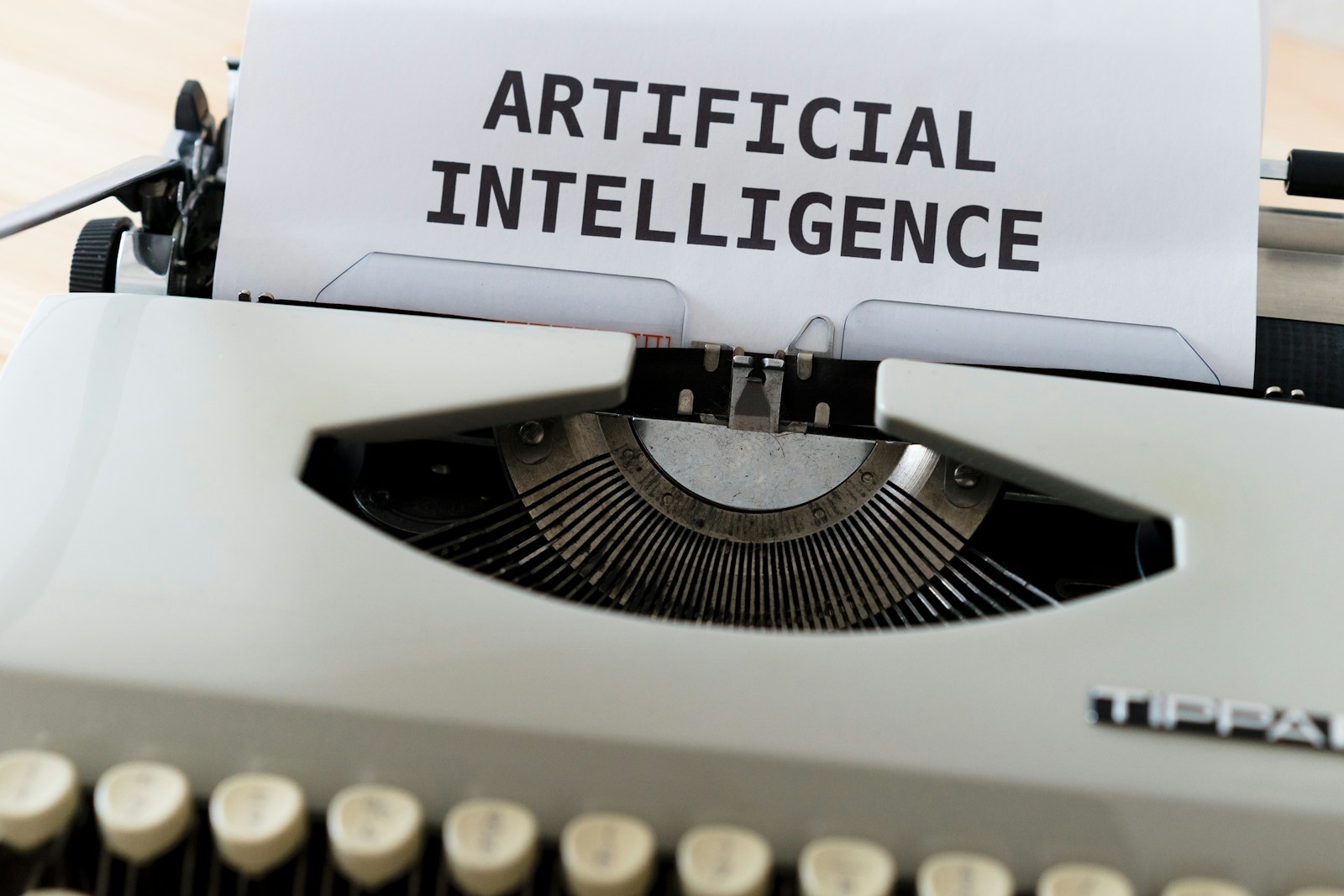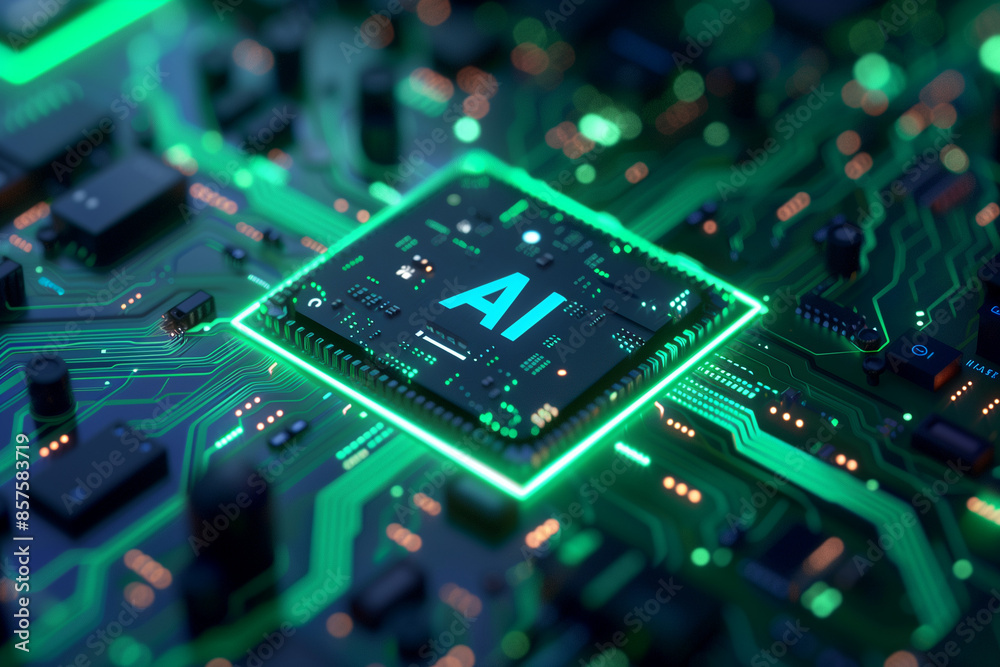From the movie recommendations you receive on Netflix to the smart assistant on your phone, Artificial Intelligence (AI) is no longer a concept confined to science fiction. It’s a powerful technology that has woven itself into the fabric of our daily lives, often in ways we don’t even notice. But what exactly is it? The term is used so frequently that its true meaning can get lost in the hype.
This guide is here to demystify the world of AI. We’ll break down the core concepts, explore the different types, and look at how this transformative technology is shaping our present and future. Whether you’re a curious student, a business professional, or just someone who wants to understand the technology driving modern innovation, you’ve come to the right place.
What Is Artificial Intelligence (AI)?
At its core, Artificial Intelligence (AI) is a broad field of computer science focused on building smart machines capable of performing tasks that typically require human intelligence. The ultimate goal of AI is to create systems that can perceive their environment, think, learn, and take actions to achieve specific goals.
Think of it like this: traditional software follows explicit, pre-programmed instructions. An AI system, however, is designed to be more flexible. It can analyze vast amounts of data, identify patterns, and make decisions or predictions without a human writing code for every possible scenario. The defining characteristic of this technology is its ability to learn and adapt.
The concept isn’t new. Pioneers like Alan Turing explored the idea of machine intelligence decades ago. However, recent advancements in computing power and the availability of massive datasets (big data) have turned theoretical concepts into practical, world-changing applications.
The Key Components of AI: Machine Learning and Deep Learning
Artificial Intelligence is an umbrella term that covers several subfields. Two of the most important and talked-about components are Machine Learning (ML) and Deep Learning.
Machine Learning (ML): The Engine of AI
Machine Learning is a subset of AI that provides systems with the ability to automatically learn and improve from experience without being explicitly programmed. ML algorithms are trained on large datasets to recognize patterns. The more data they process, the more accurate they become.
The process works like this:
- Data Input: The algorithm is fed a huge amount of data (e.g., thousands of cat pictures).
- Pattern Recognition: It analyzes the data to identify common features (e.g., whiskers, pointy ears, tails).
- Model Creation: It builds a “model” based on these patterns.
- Prediction: When shown a new picture, the model can predict whether or not it’s a cat.
Examples of ML in action include email spam filters, product recommendations on Amazon, and fraud detection systems used by banks.
Deep Learning: A Deeper Dive
Deep Learning is a more advanced, specialized subset of Machine Learning. Its architecture is inspired by the structure of the human brain, using interconnected layers of “neurons” to form an Artificial Neural Network (ANN).
These networks can process data in a more complex and nuanced way than standard ML models. Deep Learning is the powerhouse behind many of the most sophisticated AI applications today, such as:
- Natural Language Processing (NLP): Enabling voice assistants like Siri and Alexa to understand and respond to your commands.
- Computer Vision: Allowing self-driving cars to “see” and interpret the road, pedestrians, and other vehicles.
The Different Types of Artificial Intelligence
AI is often categorized based on its capabilities, which helps us understand where the technology is today and where it might be heading.
Type 1: Artificial Narrow Intelligence (ANI)
Also known as “Weak AI,” this is the only type of Artificial Intelligence (AI) that humanity has achieved so far. ANI is designed and trained to perform a single, specific task. While it can be incredibly powerful and outperform humans in that one domain, it has no consciousness or awareness outside of its programmed purpose.
Examples of ANI include:
- Google’s search algorithm
- Apple’s Face ID
- AI in video games
- Chess-playing supercomputers
Type 2: Artificial General Intelligence (AGI)
Also known as “Strong AI,” this is the next stage of AI evolution. AGI refers to a machine with the ability to understand, learn, and apply its intelligence to solve any problem, much like a human being. An AGI system would possess consciousness, self-awareness, and the ability to think abstractly and creatively. AGI is currently hypothetical and remains a primary goal for many AI researchers.
Type 3: Artificial Superintelligence (ASI)
Artificial Superintelligence is a hypothetical form of AI that would not just mimic or match human intelligence but surpass it in every conceivable way—from scientific creativity and general wisdom to social skills. The development of ASI raises profound philosophical and ethical questions about the future of humanity, as famously discussed by thinkers like Nick Bostrom and Elon Musk.
Real-World Applications of Artificial Intelligence (AI) Today
The impact of Artificial Intelligence (AI) is already being felt across virtually every industry. Its ability to process data at an incredible scale and speed is unlocking new efficiencies and capabilities. Here are just a few examples:
- Healthcare: AI algorithms are helping doctors diagnose diseases like cancer earlier and more accurately from medical images. They also assist in discovering new drugs and creating personalized treatment plans.
- Finance: AI powers algorithmic trading, detects fraudulent transactions in real-time, and helps banks assess credit risk with greater precision.
- Transportation: Self-driving cars use a sophisticated combination of AI, computer vision, and sensors to navigate roads safely. AI also optimizes logistics and supply chains for companies like Amazon and FedEx.
- Entertainment: The recommendation engines on Netflix, Spotify, and YouTube are driven by AI, learning your preferences to suggest content you’ll love.
- Customer Service: AI-powered chatbots and virtual assistants handle customer queries 24/7, providing instant support and freeing up human agents for more complex issues.
- E-commerce: Online retailers use AI to create personalized shopping experiences, manage inventory, and implement dynamic pricing strategies.
The Future of AI: Opportunities and Challenges
The journey of Artificial Intelligence (AI) has only just begun. As the technology continues to mature, it holds the promise of solving some of the world’s most pressing challenges while also presenting us with new ethical dilemmas to navigate.
The Bright Future Ahead
The potential upsides are immense. AI could help us tackle climate change by optimizing energy grids, accelerate scientific breakthroughs in medicine and materials science, and automate dangerous or tedious jobs, leading to new heights of human creativity and productivity.
Navigating the Ethical Maze
As we move forward, it’s crucial to address the challenges that come with this powerful technology. Key areas of concern include:
- Job Displacement: As AI automates more tasks, there are valid concerns about its impact on the workforce and the need for reskilling.
- Bias and Fairness: An AI is only as good as the data it’s trained on. If the data reflects human biases, the AI will learn and amplify them, leading to unfair outcomes.
- Privacy Concerns: AI systems often require vast amounts of data to function, raising important questions about data collection, consent, and surveillance.
- Security: The potential for AI to be used maliciously, from autonomous weapons to sophisticated cyberattacks, requires careful regulation and oversight.
Developing AI responsibly is a collective challenge that requires collaboration between technologists, policymakers, ethicists, and the public. Building trust and ensuring that AI is developed for the benefit of all humanity must be our guiding principle.
In conclusion, Artificial Intelligence (AI) is more than just a buzzword; it’s a fundamental technological shift that is redefining what’s possible. From the narrow AI that helps us navigate our world today to the potential of a generally intelligent system tomorrow, understanding its core principles is essential for everyone. By embracing its potential while thoughtfully managing its risks, we can guide the development of AI toward a brighter, more equitable future.
“`


